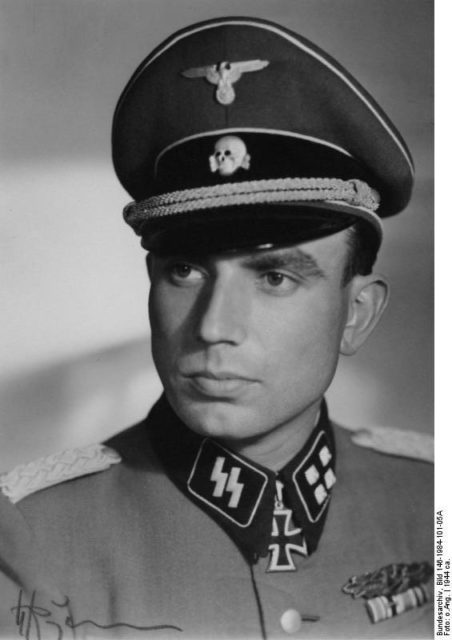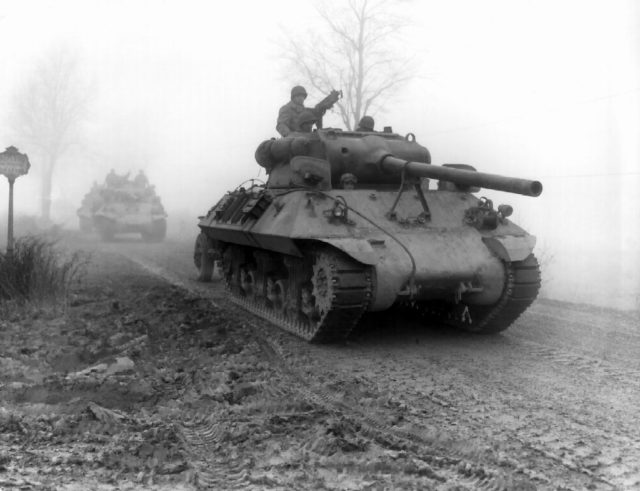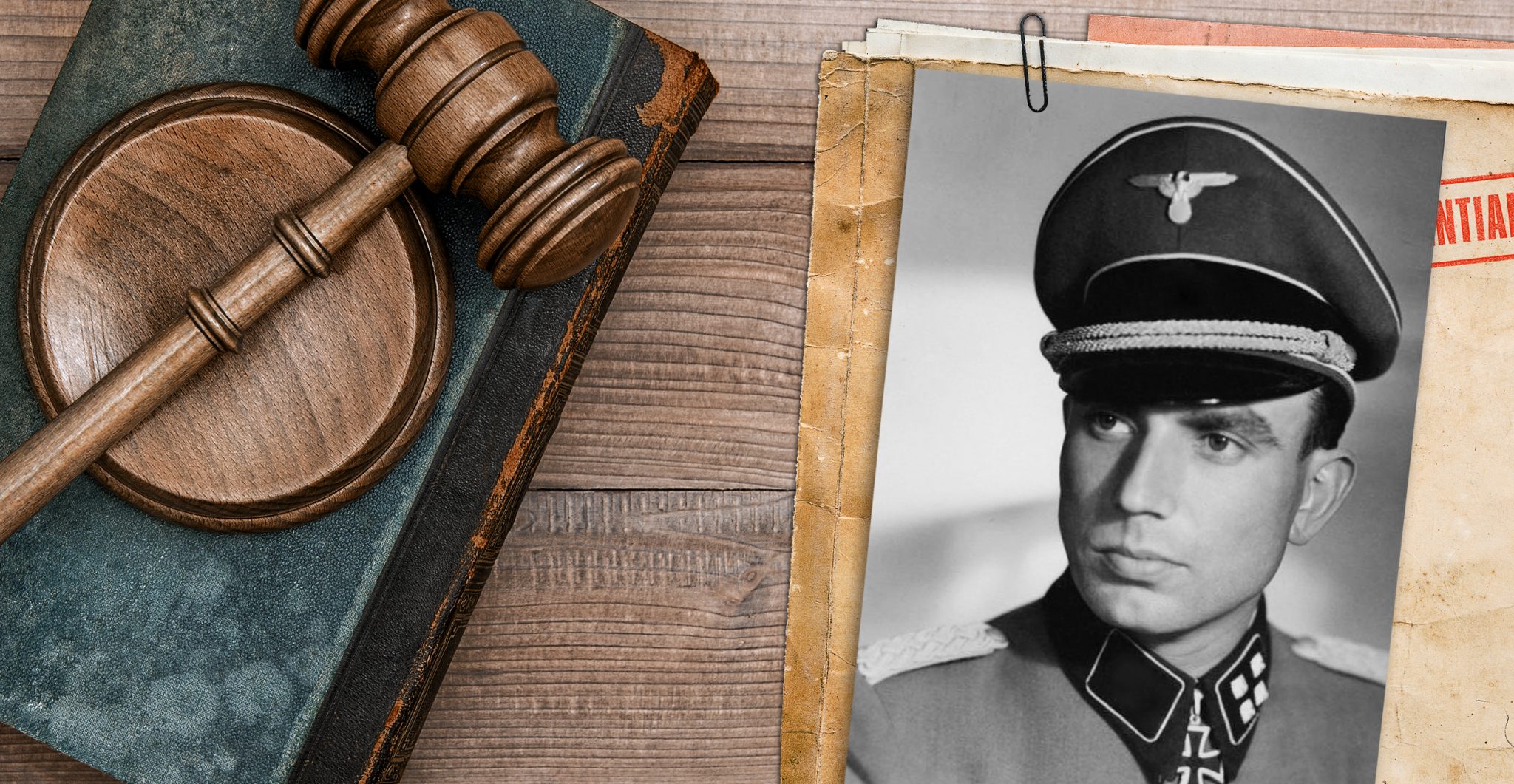Background and Training
In 1934, the 20-year-old Otto Weidinger joined the Allgemeine branch of the SS. Showing potential as a leader, he was sent for officer training. In April 1936, he was commissioned as a second lieutenant in the Deutschland formation.
Over the next three years, Weidinger alternated periods of active duty and training courses. He took part in the German invasion of Austria and spent four months seconded to the regular army to access senior command training.
The Early War
In 1939, Weidinger served as adjutant of a reconnaissance battalion during the invasion of Poland, earning his first medal. Following a training course, he was promoted to company commander in the spring of 1940.
During the brief war in the west, Weidinger again served well. He was promoted to captain and earned the Iron Cross First Class. He alternated company command and staff appointments during the campaign in Yugoslavia, continuing his preparation for high command.
The Battle for Yelnya
During the invasion of Russia, Weidinger was made commander of No. 3 Company of the SS Reich Division. The company was heavily committed against a superior enemy along 14 kilometers of the front. Weidinger’s first action commanding the company was a successful counterattack against Soviet forces pouring through the broken line. He drove them back and sealed the breach.

He continued to show calm and courage over the following weeks. One of his best achievements came in the battle for Yelnya, where he led his men in an assault against heavily defended enemy positions on the heights above the town.
Weidinger never balked at the thought of danger. He led bayonet charges and was injured several times.
Operation Citadel
Following a stint as an instructor, Weidinger returned to the Russian front in time for Operation Citadel, the German attempt to destroy the Russians in the Kursk salient.
Weidinger’s battalion led the way in the Deutschland regiment’s attack against some of the toughest Russian positions. Moving out under cover of darkness, they captured Russian outposts protecting an anti-tank ditch at Jakantov, opening the way for their comrades.
After the failed Kursk offensive, Weidinger was given command of a reconnaissance battalion. During the following months, he faced the toughest fighting of his career, as the massed Soviet armies pushed back against the invaders. Calm under fire, he trained his men to stay down in their trenches until Russian tanks had rolled over them, then emerge to fight the enemy, counting on more heavily armed troops to deal with the tanks.
Normandy
In March 1944, Weidinger was made commander of his own battle group. They were moved to France, where they became part of the forces countering the Allied invasion in June.
The broken terrain of the Normandy bocage, which suited other commanders, caused Weidinger problems. Reduced visibility disrupted fields of fire. He could see so little that he could not directly control many of his troops.
His troops took heavy losses in offensives against the Allies, including one which was called off by more senior commanders even as Weidinger’s men advanced into an artillery barrage.
Breaking the Encirclement
When a large group of German troops was encircled around Falaise, Weidinger was among the forces ordered to break the encirclement.
His personal example as a leader kept his men going even as exhaustion threatened to disrupt their advances. They defeated a Polish tank force, pushed back Allied forces, and captured Mount St Leger. From the high ground, their fire dominated the surrounding area, breaking the encirclement.
The remains of the German army escaped through the gap and began a fighting retreat toward Germany.
Moving East
Luckily for Weidinger, he was not called upon to play a significant role in the Battle of the Bulge, Hitler’s failed attempt to break the Allied offensive. Shortly after the Bulge, he was moved east, to fight the advancing Soviet forces.

Das Reich, Weidinger’s parent division, struggled to defend the Hungarian oilfields, on which the Reich depended for fuel. When they failed, they retreated into Austria to defend the capital, Vienna. By April 14, it too had to be abandoned, and they withdrew across the Danube.
Das Reich continued to fight on the eastern front, as individual battle groups instead of a single formation. Weidinger and his men were sent to Czechoslovakia, where he carried out his last operation of the war.
The Prague Extraction
When a revolt broke out in Prague, SS forces there became trapped. Given that the Germans had performed atrocities in Czechoslovakia, those Germans feared reprisals if the Czechs or Soviets captured them. On May 6, Weidinger and his group set out to rescue them.
In the suburbs of Prague, they encountered a huge roadblock made of cobblestones and had to work late into the night clearing the road. At the Troya bridge, they came under fire from small-arms and halted until daylight, rather than risk hitting civilians in the dying days of the war. The next day, they took the bridge and also ground on the other side.
Following negotiations, the locals agreed to let Weidinger take the Germans out of Prague. As more Germans appeared seeking safety, a column of 1000 lorries formed and rolled out of the city. They reached the American lines, where Weidinger disbanded his unit and surrendered.
After the War
Weidinger spent six and a half years in prison. He then left the military life behind, becoming a pharmacist. He wrote several books about the history of the formations he fought in. He died in 1992.
Source:
James Lucas (1996), Hitler’s Enforcers: Leaders of the German War Machine 1939-1945
